Trung Tan Nguyen
Transformer-Based Deep Learning Detector for Dual-Mode Index Modulation 3D-OFDM
Sep 09, 2023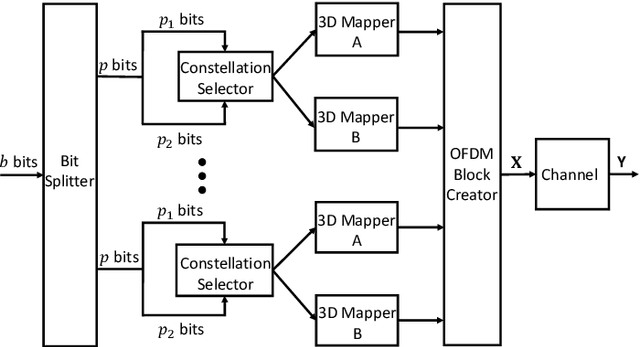
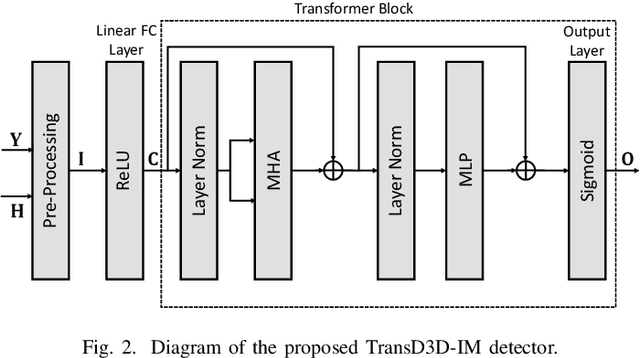
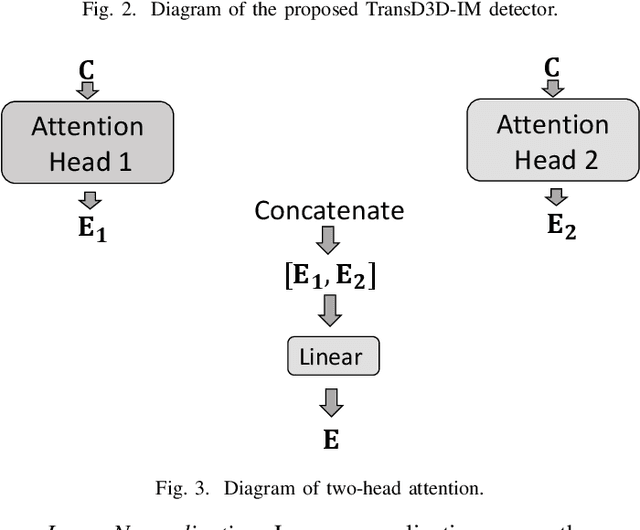
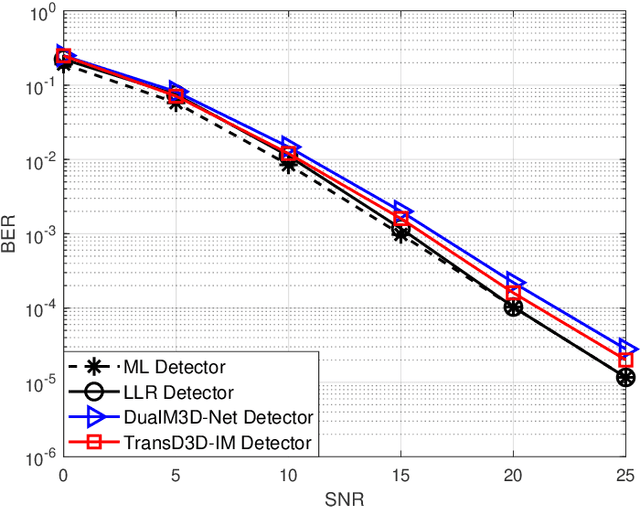
Abstract:In this paper, we propose a deep learning-based signal detector called TransD3D-IM, which employs the Transformer framework for signal detection in the Dual-mode index modulation-aided three-dimensional (3D) orthogonal frequency division multiplexing (DM-IM-3D-OFDM) system. In this system, the data bits are conveyed using dual-mode 3D constellation symbols and active subcarrier indices. As a result, this method exhibits significantly higher transmission reliability than current IM-based models with traditional maximum likelihood (ML) detection. Nevertheless, the ML detector suffers from high computational complexity, particularly when the parameters of the system are large. Even the complexity of the Log-Likelihood Ratio algorithm, known as a low-complexity detector for signal detection in the DM-IM-3D-OFDM system, is also not impressive enough. To overcome this limitation, our proposal applies a deep neural network at the receiver, utilizing the Transformer framework for signal detection of DM-IM-3D-OFDM system in Rayleigh fading channel. Simulation results demonstrate that our detector attains to approach performance compared to the model-based receiver. Furthermore, TransD3D-IM exhibits more robustness than the existing deep learning-based detector while considerably reducing runtime complexity in comparison with the benchmarks.
Deep Neural Network-Based Detector for Single-Carrier Index Modulation NOMA
Sep 20, 2022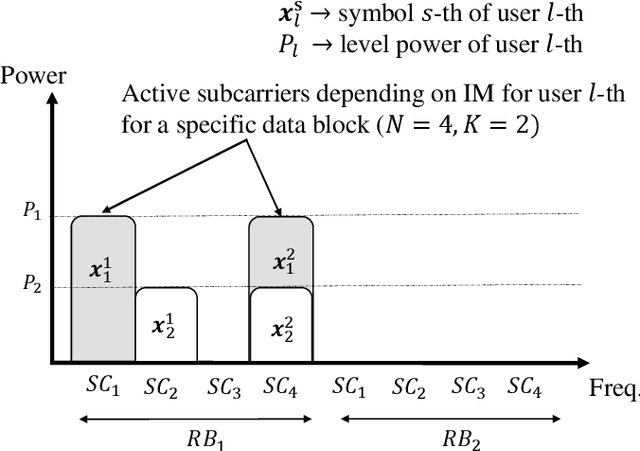

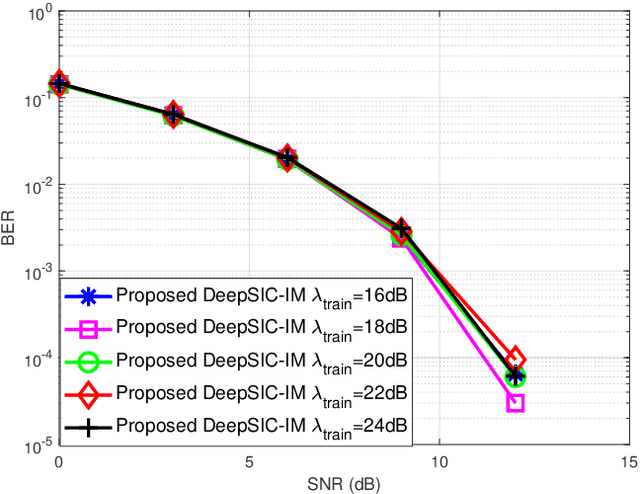
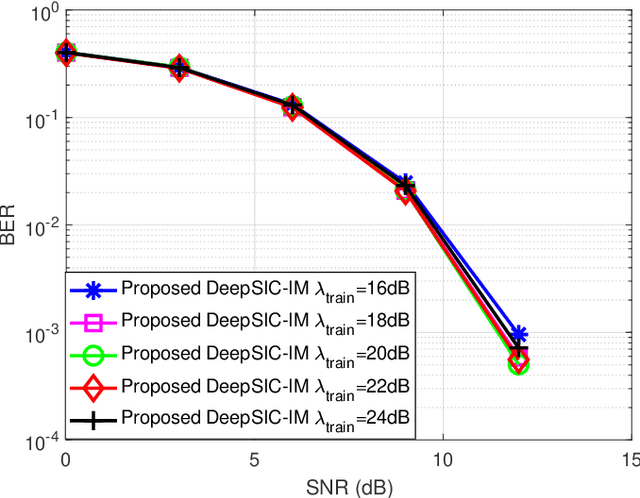
Abstract:In this paper, a deep neural network (DNN)-based detector for an uplink single-carrier index modulation nonorthogonal multiple access (SC-IM-NOMA) system is proposed, where SC-IM-NOMA allows users to use the same set of subcarriers for transmitting their data modulated by the sub-carrier index modulation technique. More particularly, users of SC-IMNOMA simultaneously transmit their SC-IM data at different power levels which are then exploited by their receivers to perform successive interference cancellation (SIC) multi-user detection. The existing detectors designed for SC-IM-NOMA, such as the joint maximum-likelihood (JML) detector and the maximum likelihood SIC-based (ML-SIC) detector, suffer from high computational complexity. To address this issue, we propose a DNN-based detector whose structure relies on the model-based SIC for jointly detecting both M-ary symbols and index bits of all users after trained with sufficient simulated data. The simulation results demonstrate that the proposed DNN-based detector attains near-optimal error performance and significantly reduced runtime complexity in comparison with the existing hand-crafted detectors.
Deep Learning-Based Signal Detection for Dual-Mode Index Modulation 3D-OFDM
Sep 20, 2022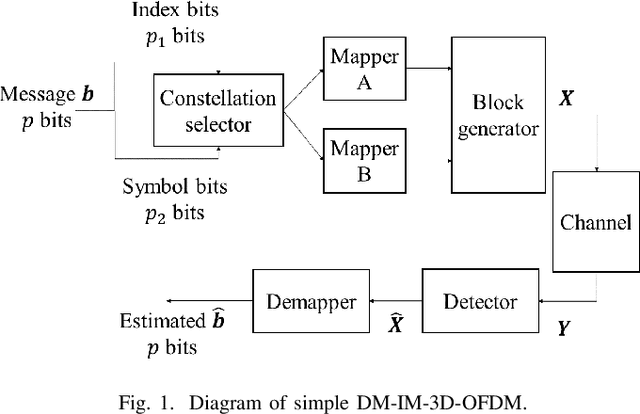
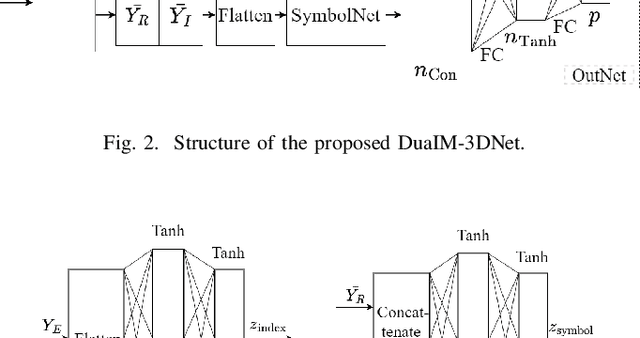
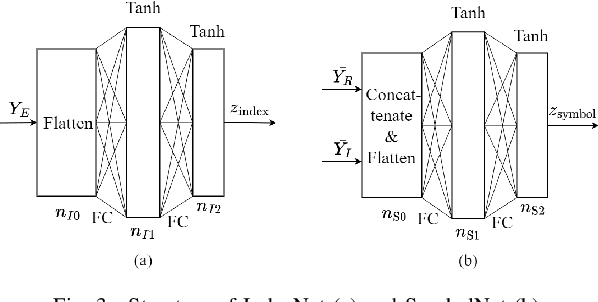
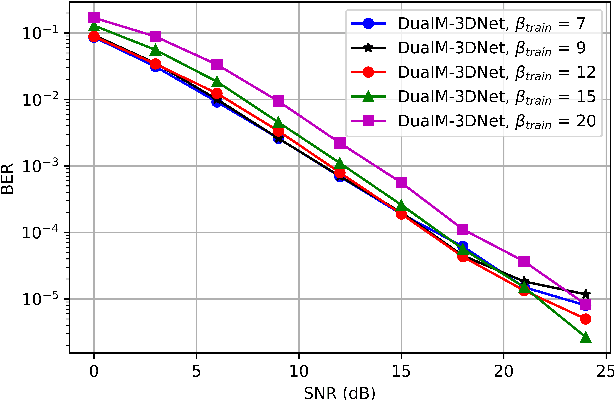
Abstract:In this paper, we propose a deep learning-based signal detector called DuaIM-3DNet for dual-mode index modulation-based three-dimensional (3D) orthogonal frequency division multiplexing (DM-IM-3D-OFDM). Herein, DM-IM-3D- OFDM is a subcarrier index modulation scheme which conveys data bits via both dual-mode 3D constellation symbols and indices of active subcarriers. Thus, this scheme obtains better error performance than the existing IM schemes when using the conventional maximum likelihood (ML) detector, which, however, suffers from high computational complexity, especially when the system parameters increase. In order to address this fundamental issue, we propose the usage of a deep neural network (DNN) at the receiver to jointly and reliably detect both symbols and index bits of DM-IM-3D-OFDM under Rayleigh fading channels in a data-driven manner. Simulation results demonstrate that our proposed DNN detector achieves near-optimal performance at significantly lower runtime complexity compared to the ML detector.
 Add to Chrome
Add to Chrome Add to Firefox
Add to Firefox Add to Edge
Add to Edge